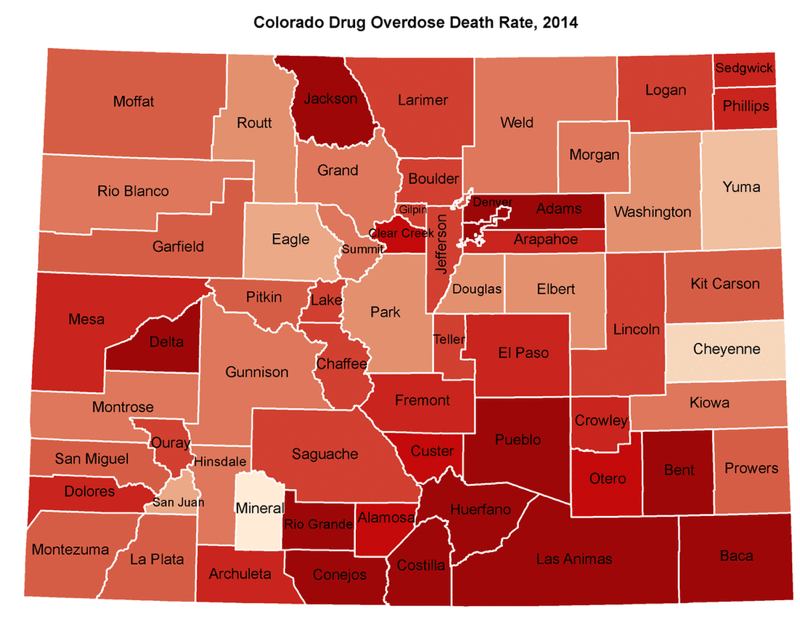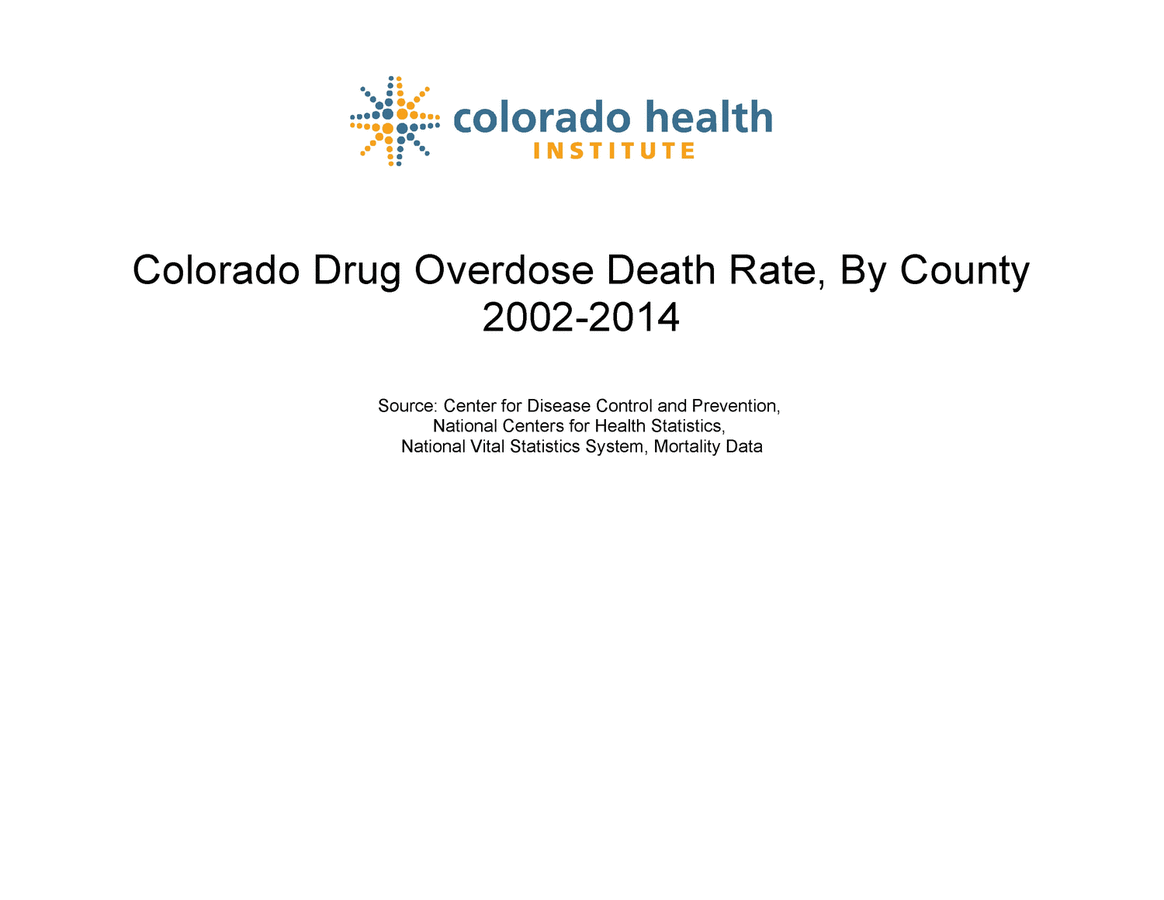
Colorado's yearly opioid-related overdose deaths have more than quadrupled since 1999 with a 93% increase in heroin-related deaths between 2011 and 2014.
Medication-Assisted Treatment(MAT) of narcotic addiction has been proven through multiple research studies to save lives.MAT treatment includes medications such as methadone, buprenorphine, and naltrexone almost always combined with behavioral therapy.The use of MAT has been so well proven that it is strongly supported, funded, and encouraged by the Substance Abuse and Mental Health Services Administration, a governmental agency.The success rate for decreasing deaths by using these treatment modalities significantly out-shines the success rates of many of the life-saving methods for typical medical conditions that we accept as "standard" practice.Yet most patients living with narcotic addiction do not receive this treatment.
Why?Well in some counties of Colorado, the treatment is simply unavailable.Nearly half (31of 64) of counties do not have a single location that provides Medication-Assisted Treatment.And 1/3rd of these counties without any source of treatment have overdose death rates significantly higher than the state average.

Being able to prescribe these medications requires an additional training and application for a "Data 2000" also known as an "X" waiver from the Drug Enforcement Agency(DEA).This additional training, while not too difficult to obtain as the entire training can be done online, may still be considered just too much of a hurdle for many established medical providers to tackle.This continues to limit the number of available providers.Some grant programs help reimburse for this training but provider resistance to it and/or lack of knowledge about it may make bringing the needed number of providers up to the levels needed a slow process.
However, coming over the horizon is the ability to add telemedicine to the arsenal of modalities to assist in the fight.In October 2018, President Trump signed into law the "SUPPORT for Patients and Communities Act".Part of that Act creates a timeline for the DEA to establish a set of rules that would allow for medical providers with an X waiver to prescribe certain MAT medications through an initial telemedicine visit.Currently, an initial in-person visit is needed.This needed in-person visit is obviously a significant barrier to care when a person with an opioid use disorder lives in an area that lacks MAT provider resources.It is also a barrier for those that would like to seek help but fear loss of privacy or social stigmas related to being seen going to a treatment center.Patients with limited transportation and social support would also benefit from implementation of a telemedicine-enabled treatment program.
Care on Location is currently in development of a telemedicine-enabled MAT program in partnership with regional behavioral health providers.By the end of 2019, we hope to be able to reach patients state-wide in need of assistance with their narcotic abuse and addiction.This increased access to proven beneficial treatment will decrease social, financial, and medical costs.But more importantly tele-MAT will save lives.
To learn more about our Tele-MAT program, please contact us through the link on our website. Information for this post from the author's clinical background and the Colorado Health Institute's: "Miles Away From Help - The Opioid Epidemic and Medication-Assisted Treatment in Colorado.